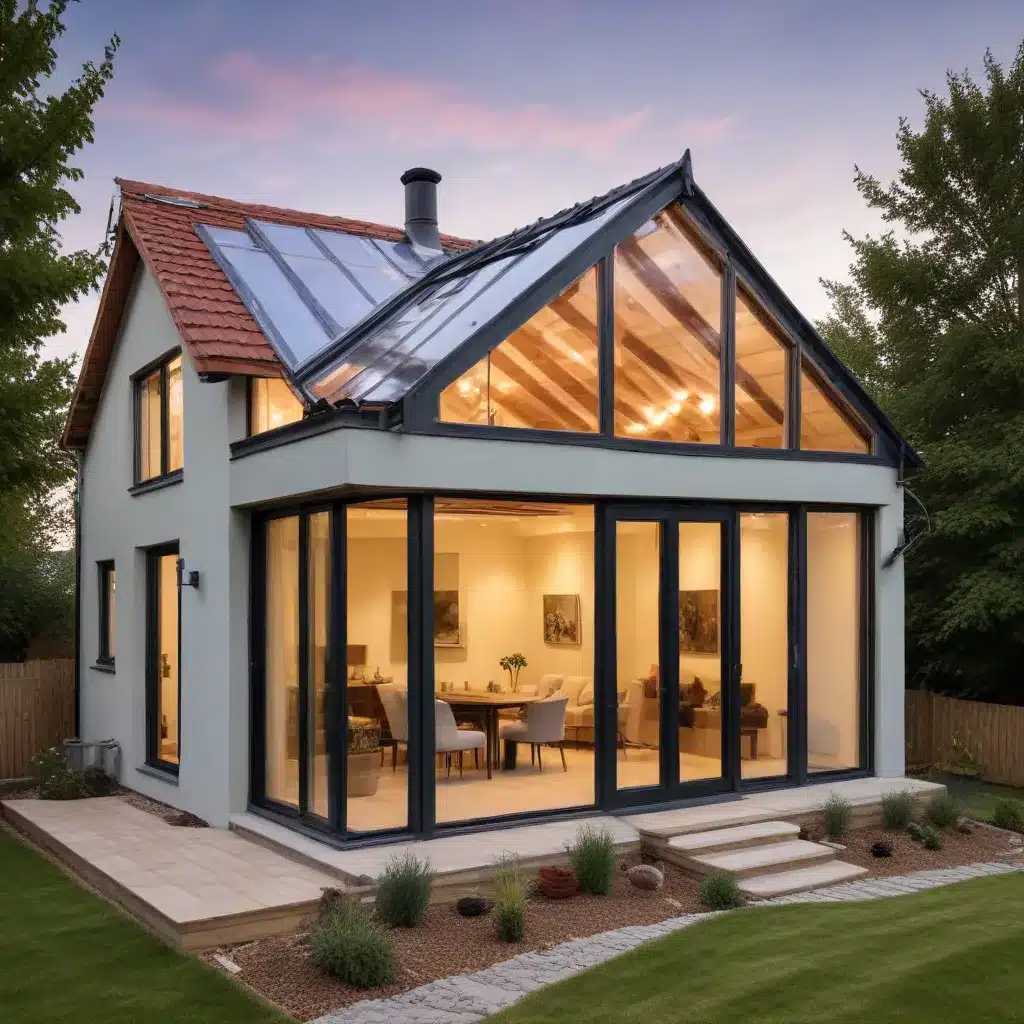
As an experienced home extension consultant, I’m thrilled to share insights on how to create sustainable and thermally comfortable home extensions. In today’s world, where energy efficiency and environmental consciousness are paramount, incorporating sustainable building practices is essential for enhancing the overall thermal performance of your home.
Sustainable Building Practices
When it comes to sustainable home extensions, the key is to adopt a holistic approach that considers various aspects of the design and construction process. Let’s explore some of the crucial sustainable building practices you should consider.
Passive Design Strategies
One of the cornerstones of sustainable home extensions is the implementation of passive design strategies. This involves optimizing the building’s orientation, window placement, and the use of natural ventilation and daylighting to minimize the reliance on active heating, cooling, and lighting systems. By harnessing the power of the sun and the natural airflow, you can significantly reduce your energy consumption and enhance the overall thermal comfort of your home.
Renewable Energy Integration
Incorporating renewable energy sources, such as solar panels or ground-source heat pumps, can be a game-changer in achieving sustainable home extensions. These technologies not only reduce your carbon footprint but also provide a reliable and renewable source of energy, ultimately enhancing the long-term sustainability of your home.
Sustainable Material Selection
The materials used in your home extension can have a significant impact on its environmental footprint. Opting for sustainable, locally-sourced, and low-embodied carbon materials can greatly contribute to the overall sustainability of your project. Look for materials that are recyclable, renewable, or have a low carbon impact during their production and transportation.
Thermal Comfort Considerations
Ensuring optimal thermal comfort is a crucial aspect of sustainable home extensions. By addressing the thermal performance of your home, you can create a comfortable living environment while minimizing energy consumption.
Building Envelope Optimization
The building envelope, which includes the walls, roof, and windows, plays a crucial role in regulating the thermal conditions within your home. Proper insulation, high-performance windows, and air-tight construction can significantly improve the thermal efficiency of your home extension, reducing the need for active heating and cooling systems.
Ventilation and HVAC Systems
Efficient ventilation and HVAC (Heating, Ventilation, and Air Conditioning) systems are essential for maintaining optimal indoor air quality and thermal comfort. Incorporating strategies like heat recovery ventilation, smart thermostats, and zoned HVAC systems can help you optimize energy usage while ensuring a comfortable living environment.
Thermal Regulation Techniques
Beyond the building envelope and mechanical systems, there are various thermal regulation techniques that can be employed in sustainable home extensions. These include the use of thermal mass, such as high-density materials like concrete or masonry, to absorb and release heat, as well as the strategic placement of shading devices and the integration of natural ventilation strategies.
Environmental Impact Mitigation
Sustainable home extensions go beyond just enhancing thermal comfort; they also aim to minimize the overall environmental impact of your home improvement project.
Energy Efficiency Measures
Implementing energy-efficient measures, such as high-performance insulation, airtight construction, and energy-efficient windows, can significantly reduce your home’s energy consumption and carbon footprint. These measures not only contribute to thermal comfort but also support the long-term sustainability of your home.
Resource Conservation
Sustainable home extensions should also consider the conservation of resources, such as water and waste management. This can include the installation of water-efficient fixtures, rainwater harvesting systems, and waste reduction strategies during the construction and ongoing operation of your home.
Homeowner Engagement
Achieving sustainable home extensions is a collaborative effort that requires the active engagement of homeowners. By empowering homeowners to adopt sustainable lifestyles and understand the challenges of home renovations, you can ensure the long-term success of your sustainable home extension project.
Sustainable Lifestyle Adoption
Encouraging homeowners to embrace energy-efficient appliances, modify their occupant behavior, and engage in sustainability-focused education can have a profound impact on the overall performance and environmental impact of their home extension.
Retrofit and Renovation Challenges
Navigating the complexities of permit requirements, cost-effective upgrades, and collaboration with experienced contractors can be daunting for homeowners. Providing guidance and support throughout the retrofit and renovation process can help homeowners overcome these challenges and achieve their sustainable home extension goals.
Holistic Design Approach
To truly maximize the benefits of sustainable home extensions, a holistic design approach is essential. This involves incorporating various disciplines and considering the entire life cycle of the project.
Integrated Project Delivery
By fostering a collaborative environment among architects, engineers, builders, and sustainability experts, the integrated project delivery (IPD) approach can optimize the design, construction, and operational phases of your sustainable home extension.
Adaptive and Resilient Design
In the face of evolving climate conditions and changing homeowner needs, sustainable home extensions should be designed with adaptability and resilience in mind. This includes incorporating climate-responsive adaptations, flexibility for future modifications, and biophilic design principles that connect the indoor and outdoor environments.
Remember, as an experienced home extension consultant, your role is to guide homeowners towards creating sustainable and thermally comfortable living spaces that not only reduce their environmental impact but also enhance their overall well-being. By embracing these sustainable building practices, thermal comfort considerations, and a holistic design approach, you can help homeowners achieve their goals and contribute to a more sustainable future.
For more information on our home extension services and how we can assist you in creating a sustainable and comfortable home, please visit https://abc-home.co.uk/home-extension/.
















